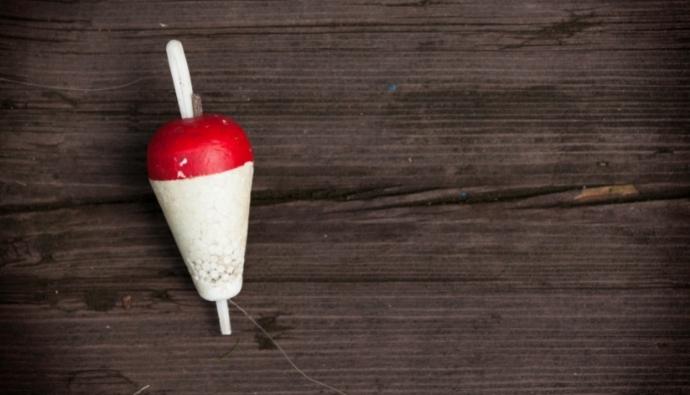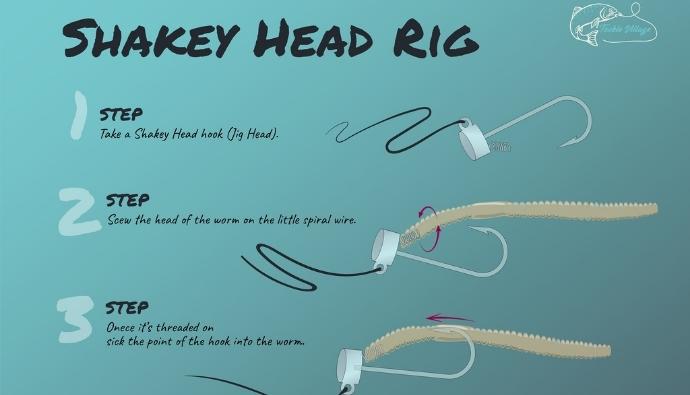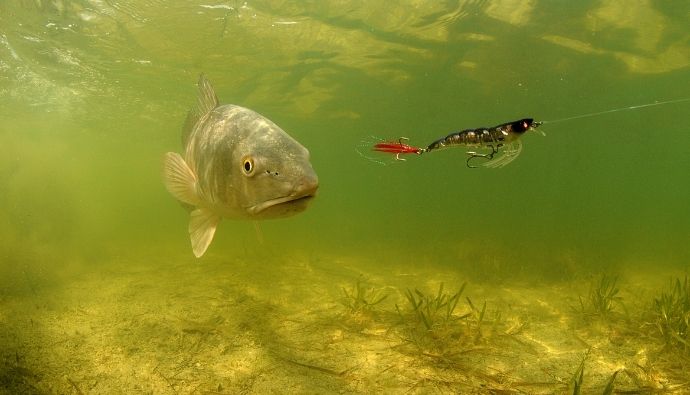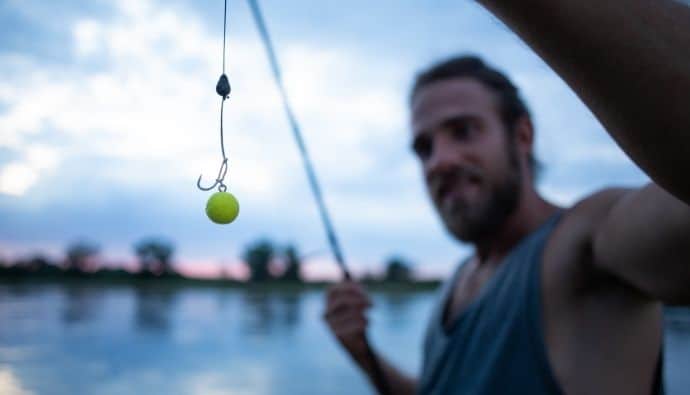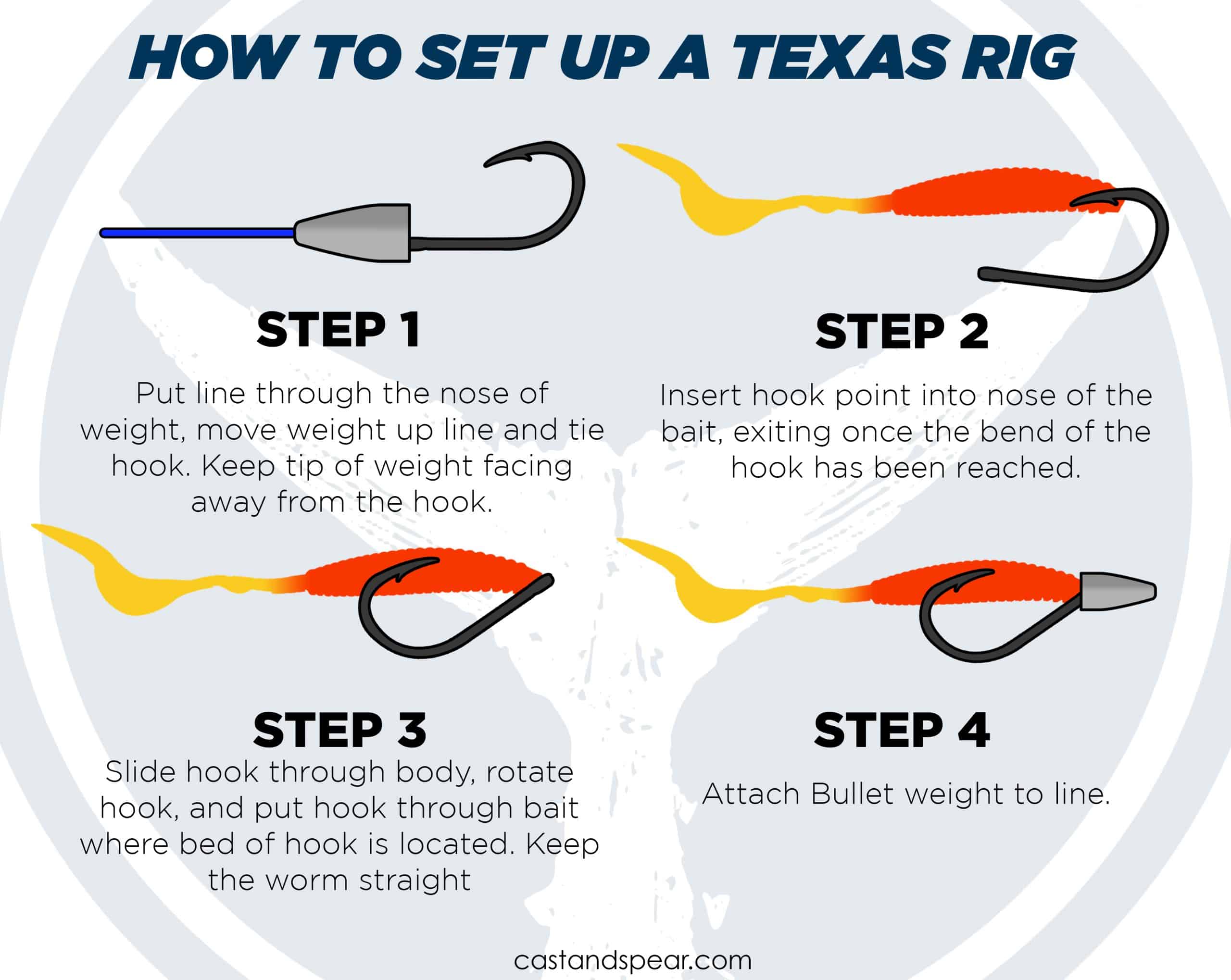Are you looking to rig up a Pompano rig that actually catches fish? We’ve seen plenty of fishermen jerry-rig setups that work for catching other fish but flounder when targeting pompano. In this guide, we show you how to tie a pompano rig and share a few pre-tied rigs you can try if you want the easy option.
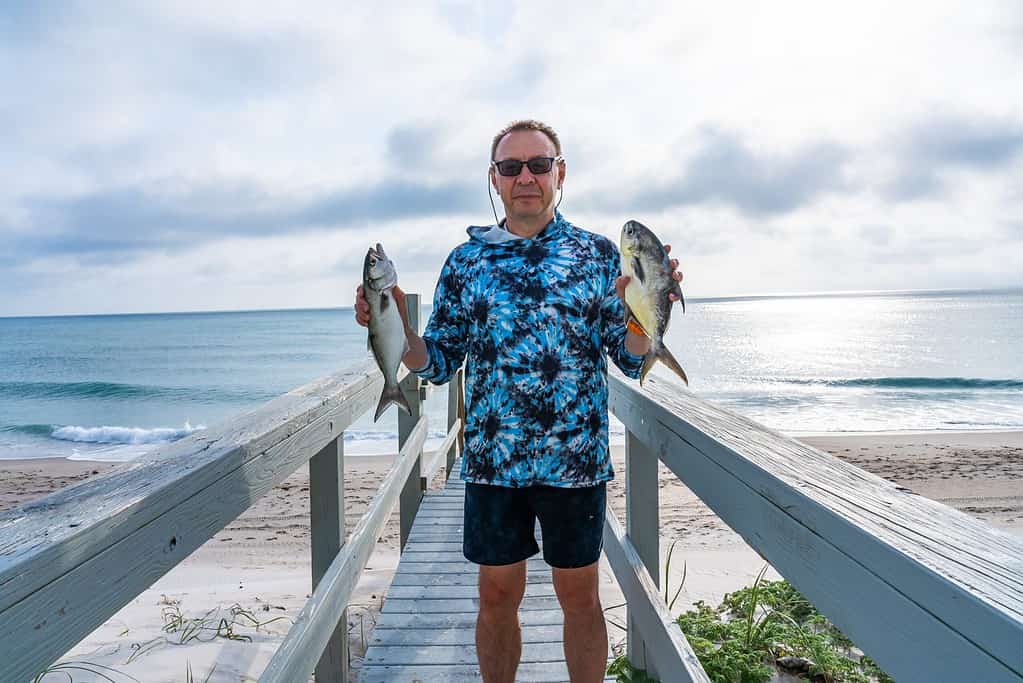
Pompano is prized for its delicious meat, one of the reasons why it is considered a dream caught by anglers.
Since it swims in schools where there is one, there are plenty more, so you won’t have difficulty spotting them.
However, fishing for pompano requires an outfit fitted with light tackle and hooks that may be smaller than you are used to.
How To Tie A Pompano Rig (Video)
If you plan to fish near beaches in Florida, the gulf coast, or on an inshore fishing boat for this fish, you should learn how to set up Pompano rigs beforehand. These are bottom feeders and usually come into estuaries and lagoons. You can catch pompano using the following tips in mind for your rigs and tackle:
Pompano Rig Line
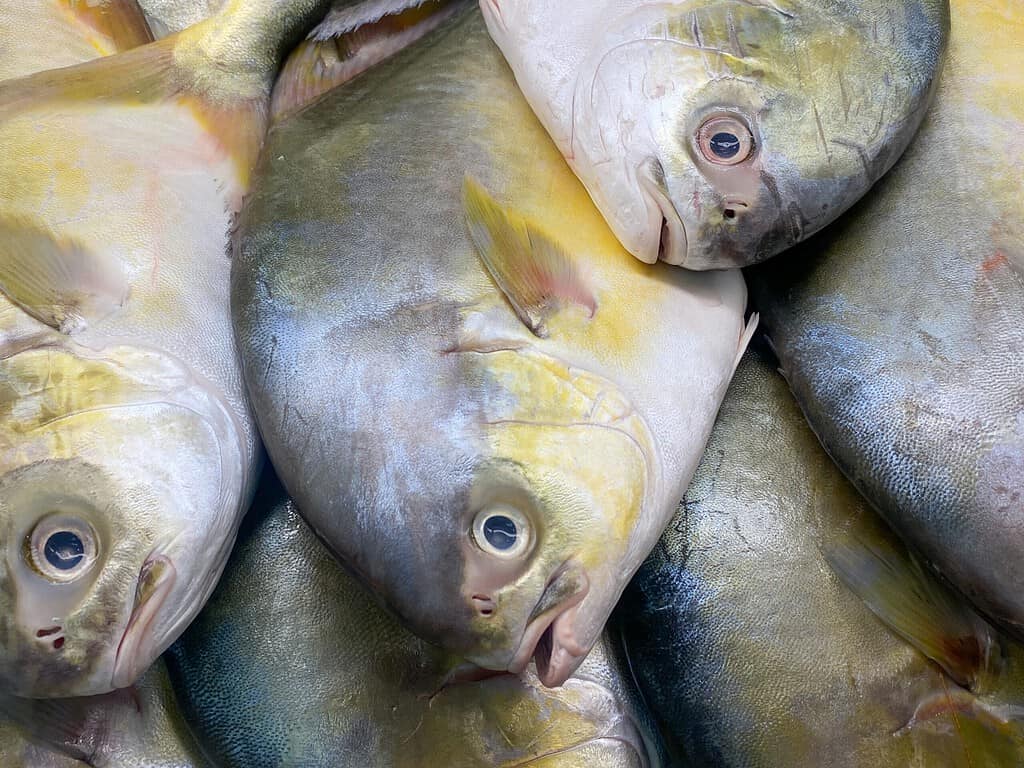
The fishing line strength you use for this fish depends on the area that you are fishing from. Pompano swims closer to the beach when it is windy, and the current washes out their favorite diet (crabs) out to sea.
If you are fishing on a typical day, use a 12-pound line, but you will need a hefty 20-pounder for days when the surf is a bit turbulent. A heavy line will be able to accommodate the large sinkers you will need to use to stabilize the bait. If fishing inshore, use a 6 to 10-pound braid test line.
The type of line you should use depends on the environment as well. If you are surf fishing for pompano, for instance, use monofilament for both inshore and offshore. If the water is turbulent, use strong fluorocarbon or a fluoro leader with hook attachments.
Pompano Rig Hooks
A great low-cost hook to use for pompano fishing is the 1/0 or 2/0 Eagle Claw circle. Besides holding the bait better, it is also easy to unhook from smaller fish or the little mouth of a Pompano. For the larger type of pompano, go for 3/0 or 4/0 circles.
Pompano Rig Bait
Even though this species will eat smaller fish, most usually go for clams, shrimp, mussels, and crabs in the area. The best ones include one or two fiddler crabs, shrimp, squid, sand fleas, and mussels. When you are targeting the fish, look for a deep cut between a sand bar and a grassy flat.
This is where pompano usually waits for shrimp and crustaceans to be washed from the grass from the outgoing tide. When the tide comes in, the game fish usually swims into the glass flats for food. The best dead baits are the same ones that you use when you are fishing from the beach.
One best bait is fresh dead shrimp. You can also use the frozen variety in a pinch, but fresh dead will always reign supreme. It can also outperform sand fleas.
Just break it into two separate baits. First, pinch off the head and discard it. Break the rest in half or three parts if you have a big shrimp. Add it to lures or your rig to attract more strikes, especially if you are fishing in deeper water. Plus, make sure that bait is sized to the hook you are using, so if it is small, use a 1/0 hook and if it is large, use a 2/0.
Pre-Made Pompano Rigs
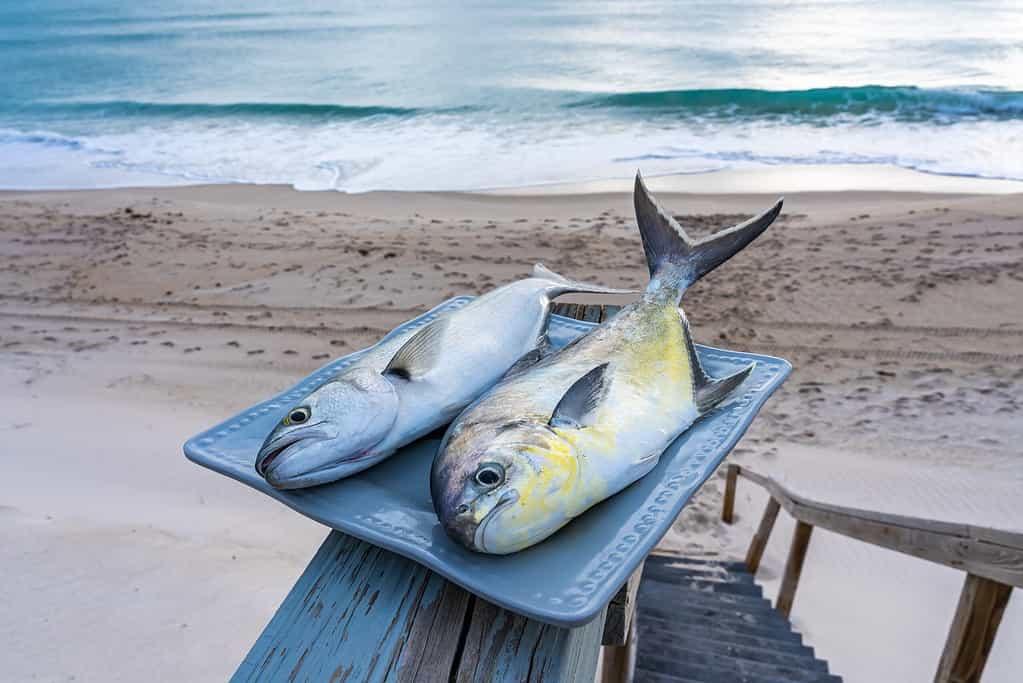
Recommended Pre-Made Rigs:
Above is a pre-made pompano rig you can try if you don’t want to make them yourself. Below are a few components for making other rigs that are worth trying to catch pompano with.
Sliding Sinker Rig – This rig ensures that the sinker remains on the bottom with the bait suspended on top. It is ideal for surf fishing for this species of fish. It employs a 2/0 circle hook as well as a pyramid weight and a fluoro mainline that can withstand the 12 to 15-pound test. Use sand fleas to lure the fish in.
Popping Cork Fishing Rig – If you are fishing inshore from a boat and above a couple of feet of water, use this rig. It comprises of a shrimp under a popping cork with at least two feet of 12 to 15-pound fluoro line between the cork and the hook. However, you may need to increase the length of the line in the rig, depending on the time of year and current once you arrive at your fishing spot.
Frequently Asked Questions
What is the best time to catch pompano?
The best time to catch this fish is during the last two hours of high tide or the first few hours of a falling one.
Is pompano good to eat?
Yes, pompano is good to eat. The silvery skin is edible, and the meat is firm, flaky, and boasts a mild and sweet flavor.
Can I eat this fish raw?
Pompano has tasty white meat, which is perfect, either grilled or cut up as sashimi or as ceviche. Make sure it is properly washed before serving it raw.
Is it a healthy fish?
A single Pompano fillet offers about 40% of protein and is also a great source of amino acids. It is also a good source of essential vitamins and minerals.
Does it have a lot of bones?
Pompano do not have a lot of large bones in their fillet meat. However, they do have pin bones which you’ll need to remove using a pair of tweezers.
How big can these fish get?
Pompano that is caught in Florida waters can weigh less than 3 lbs and maybe less than 17 inches long. The largest can weigh 9 lbs and can grow to a whopping 26 inches in length.
Final Thoughts
Pompano is a challenging fish to land. They are also delicious if you decide to take a few home. If you’re finding that you’re losing too many in the surf, check to make sure you’re using quality lines and hooks. Also, double-check that your knots are tied securely. Pompano has sharp teeth, so adjust your line thickness or material accordingly.





 Facebook
Facebook YouTube
YouTube